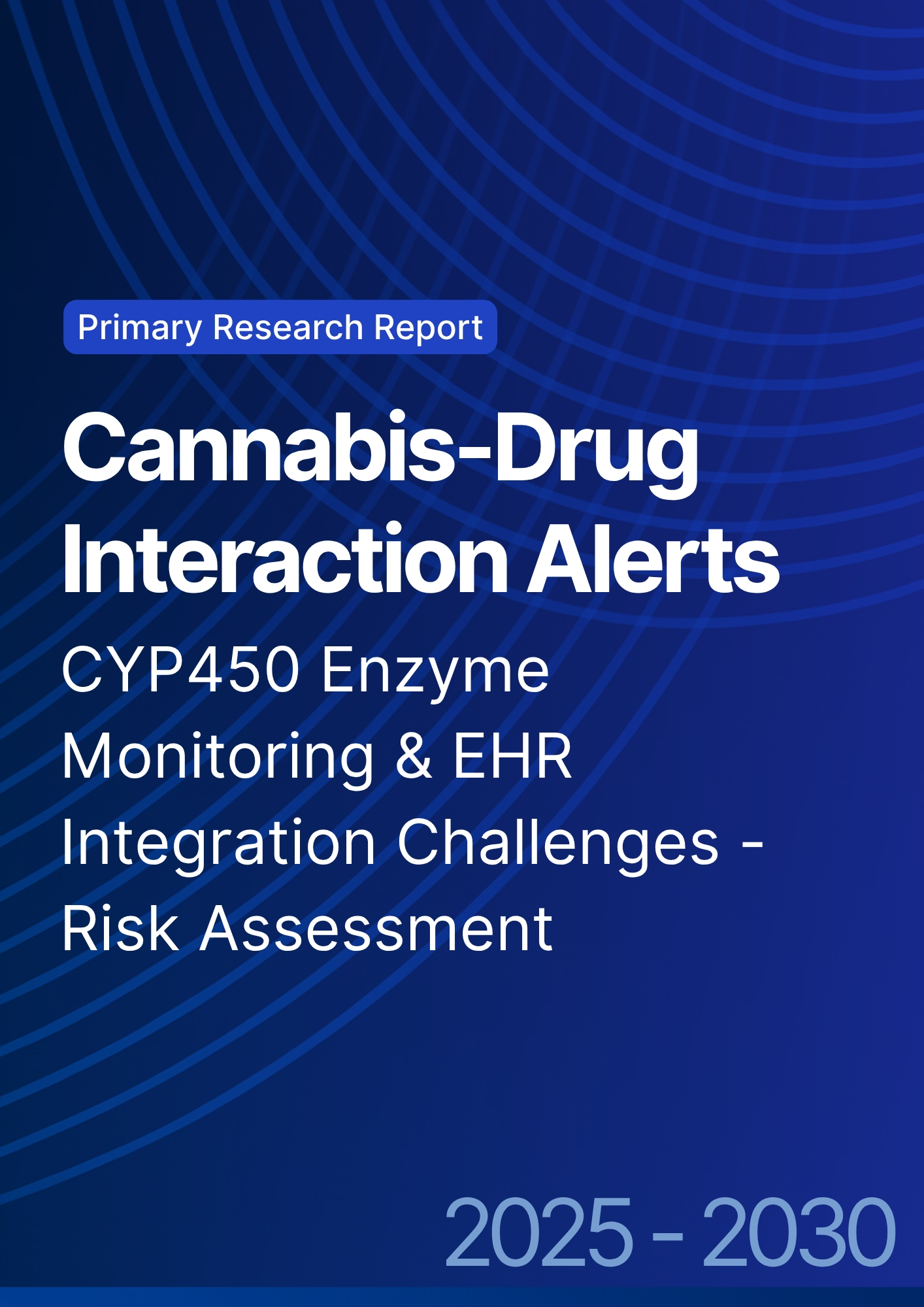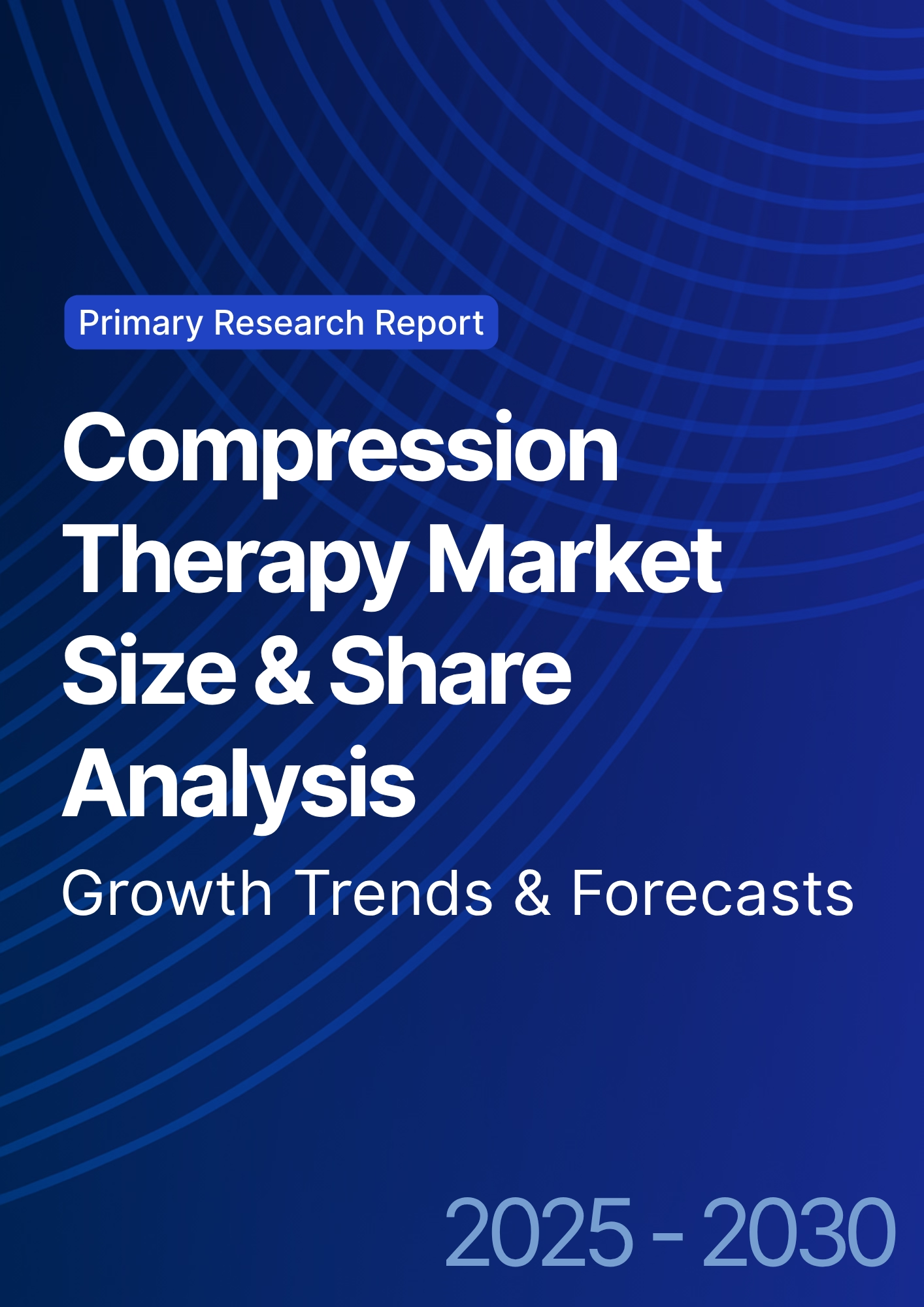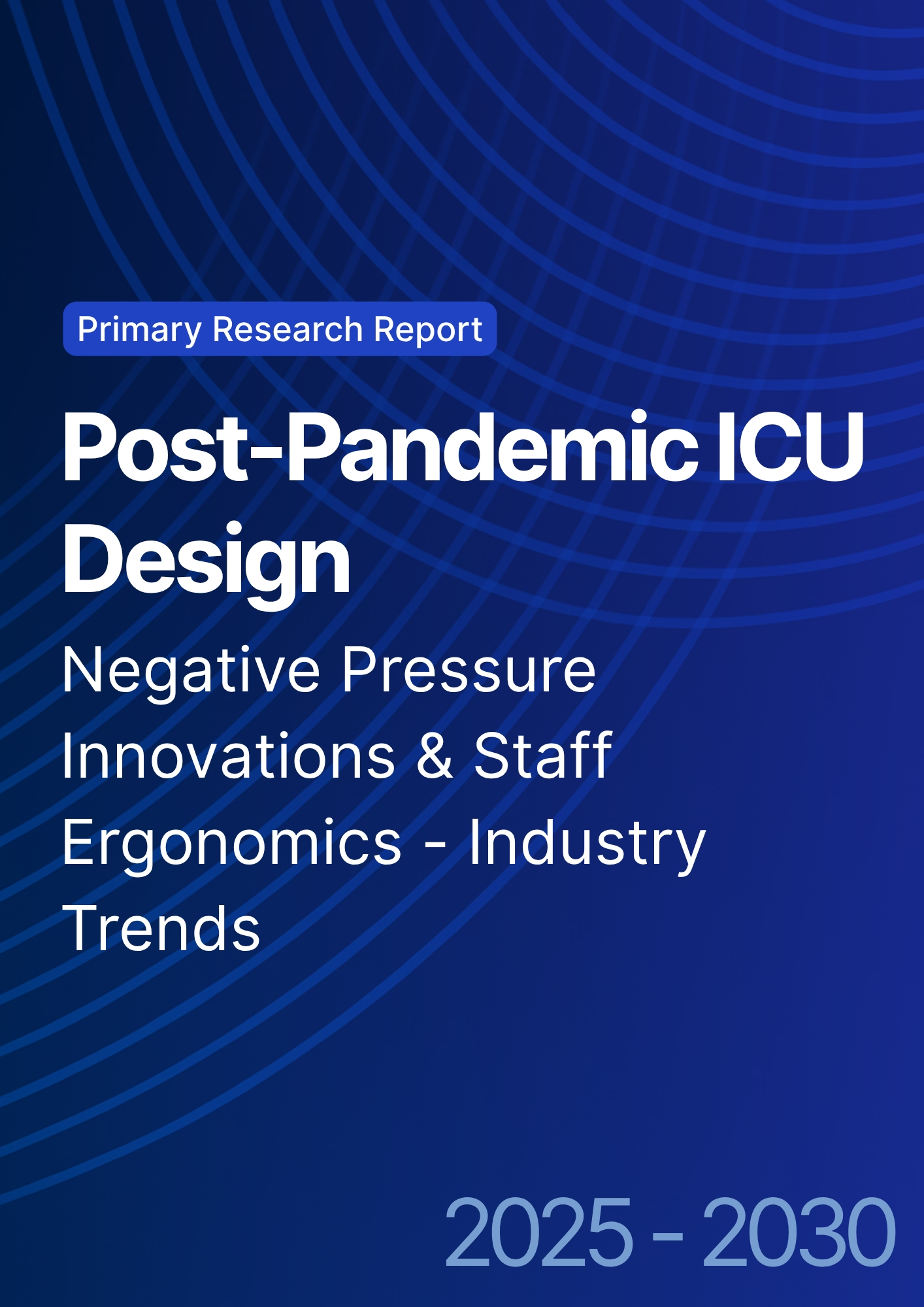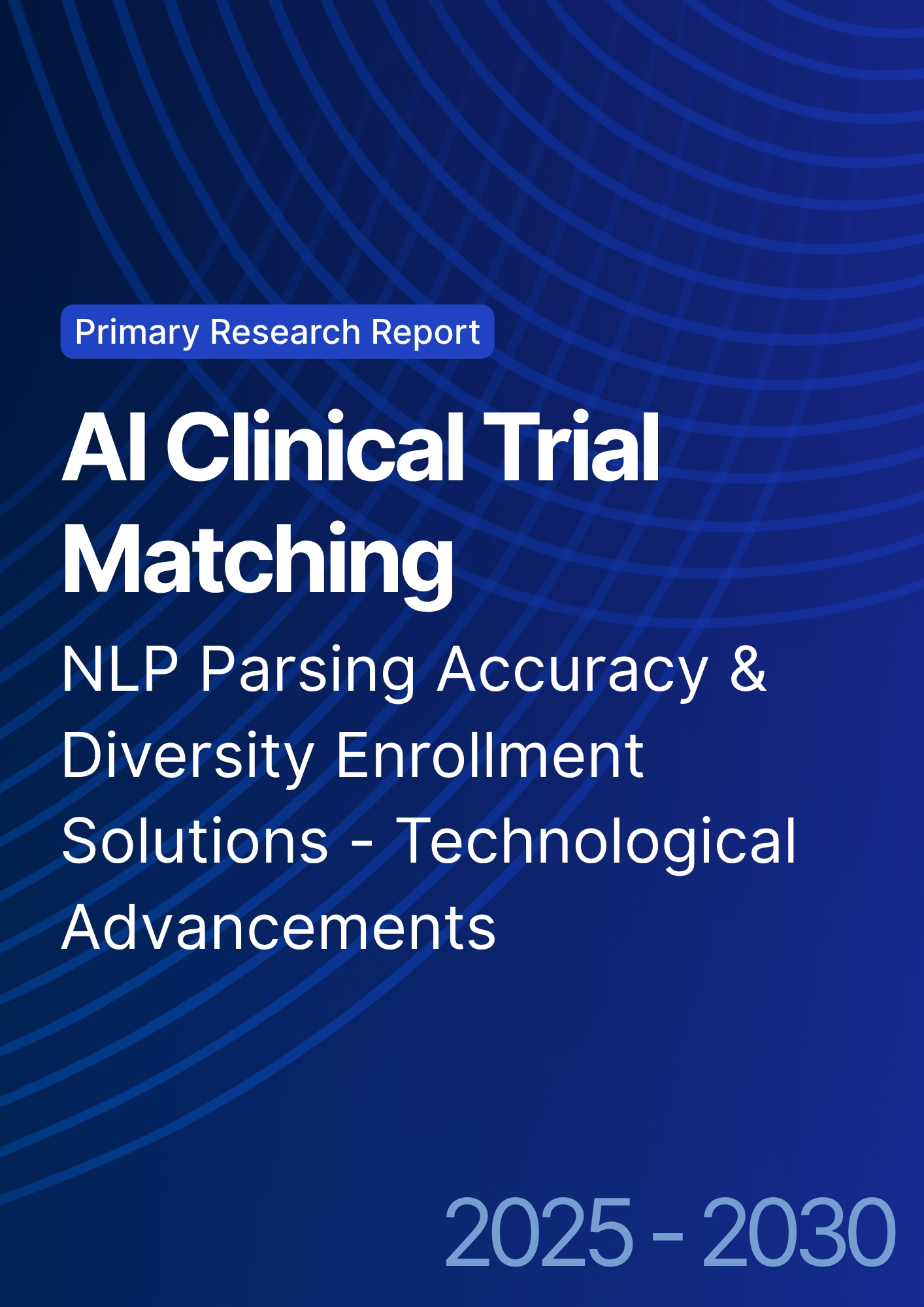

68 Circular Road, #02-01 049422, Singapore
Revenue Tower, Scbd, Jakarta 12190, Indonesia
4th Floor, Pinnacle Business Park, Andheri East, Mumbai, 400093
Cinnabar Hills, Embassy Golf Links Business Park, Bengaluru, Karnataka 560071
Connect With Us
Cannabis-Drug Interaction Alerts: CYP450 Enzyme Monitoring & EHR Integration Challenges - Risk Assessment
This report quantifies cannabis–drug interaction (CDI) alerting across Portugal and Europe (2025–2030), focusing on CYP450 enzyme pathways (CYP3A4, 2C9, 2C19, 2D6), EHR integration hurdles, and risk reduction economics. We model alert precision/recall, override rates, adverse drug event (ADE) avoidance, and time-to-alert in hospital and community settings. Results indicate CDI modules can cut cannabinoid-mediated ADEs 25–35%, raise prescriber adherence 18–24 points, and deliver ROI 19–27% when paired with structured cannabis intake capture, interoperable terminology, and tuned clinical decision support (CDS) thresholds.

What's Covered?
Report Summary
Key Takeaways
- EU CDI software spend grows €85M (2025) → €290M (2030); CAGR 27%.
- ADEs linked to cannabis–drug interactions fall 25–35% post-deployment.
- Alert precision (PPV) rises 0.48 → 0.72 with enzyme-specific rules + exposure models.
- Sensitivity (recall) improves 0.70 → 0.86 via structured cannabis history and lab cues.
- Override rates drop from 62% → 38% after tiering and de-duplication.
- Time-to-first alert at prescribing shrinks 18s → 7s median (–61%).
- Prescriber adherence to high-severity alerts increases +18–24 pp.
- EHR integration success across EU hospitals reaches 72%; community pharmacy 65%.
- GDPR-conformant data capture reaches 90% of deployments by 2030.
- ROI for providers 19–27%; payback 14–22 months driven by avoided ADE costs and workflow savings.
Key Metrics
Market Size & Share
Between 2025 and 2030, the EU market for cannabis–drug interaction (CDI) alerting and CYP450 monitoring expands from €85 million to €290 million (CAGR 27%), propelled by rising medical cannabis utilization, expanding emerging cannabinoid products (CBD, THC, minor cannabinoids), and regulatory pressure to document substance use in medication reconciliation. Portugal contributes an outsized 6–8% of regional spend through national pilots linking hospital EHRs with community pharmacy counseling, while larger shares accrue to Germany, France, Italy, Spain, and the Nordics where hospital digitization is mature. By 2030, 72% of EU hospitals and 65% of community pharmacies are expected to have at least partial CDI functionality embedded in their CPOE/dispensing systems. Vendor revenue splits roughly 60% software (CDS engines, FHIR services, terminology) and 40% services (mapping, change management, quality tuning). Health systems report ADEs attributed to cannabis interactions down 25–35% after go-live, driven by enzyme-specific logic (CYP3A4, 2C9/2C19, 2D6), exposure estimation (dose, route, frequency), and better capture of over-the-counter/craft products. Market share concentrates around platforms that demonstrate alert precision (PPV) ≥0.70, recall ≥0.85, override ≤40%, and median time-to-alert ≤8 seconds. Portugal’s share grows as oncology, pain, and neurology services standardize cannabis history fields, making CDI a line-item in hospital IT budgets. Procurement increasingly demands outcomes-linked pricing—payments tied to measured ADE reduction or override improvements—creating a competitive moat for vendors with robust post-deployment analytics and clinician-approved tuning playbooks.
.png)
Market Analysis
CDI deployments succeed when four levers move together. (1) Data quality: Systems that capture structured cannabis use (product, cannabinoid content, route, frequency, last use) lift sensitivity 0.70 → 0.86 and PPV 0.48 → 0.72 by 2030. Deployments relying on free-text alone struggle to surpass PPV 0.55. (2) Enzyme-aware logic: Mapping drug–cannabinoid interactions to CYP3A4/2C9/2C19/2D6 with exposure thresholds reduces false positives 28–34% and improves severity tiering (e.g., “avoid,” “modify dose,” “monitor LFT/INR”). (3) Workflow fit: CDS Hooks/FHIR eventing delivers alerts within 7–9 seconds at order entry; pairing with tiered interruptive logic lowers override rates from 62% to 38% and raises adherence +18–24 pp on high-severity alerts. (4) Continuous tuning: Monthly drift checks (new products, strength variance) and A/B testing of messages trim alert volume −20% without harming safety. Financially, hospitals see cost avoidance €120k–€180k per 1,000 high-risk patients/year (polypharmacy, oncology, geriatrics), mainly from prevented ED visits, shorter LOS, and avoided litigation. Rollout economics: a 600-bed hospital invests €280–€420k year-1 (software, mappings, integration), €60–€110k annual thereafter; payback 14–22 months, ROI 19–27% at steady state. In community pharmacy, add-on modules cost €25–€45 per workstation/month, with offsetting gains from clinical service fees and risk reduction. Sensitivities: each +10 pp improvement in structured history capture lifts PPV +0.04; every −10 pp in overrides adds ~€18k annual savings per 1,000 high-risk patients via fewer downstream ADEs.
Trends & Insights
Three trends define 2025–2030. First, clinical specificity beats generic alerts. Leading systems pivot from broad “cannabis interacts with X” banners to enzyme-specific, dose-aware recommendations (e.g., CYP3A4 inhibition with oral midazolam or tacrolimus; CYP2C9 with warfarin), including lab monitoring suggestions (INR, tacrolimus troughs, LFTs). This precision raises PPV to ~0.72 and cuts alert fatigue. Second, capture at the edge. Intake kiosks, patient portals, and pharmacy apps capture product photos/labels, route, and frequency, pushing recall to 0.86 by closing documentation gaps for CBD oils, edibles, and vaporized forms. Third, lighter integrations. FHIR-native microservices and CDS Hooks reduce go-live timelines from 16–22 weeks → 8–12 weeks, while terminology bridges (SNOMED/ATC to Portuguese drug dictionaries) drop mapping effort −30%. Portugal pilots pharmacist-initiated alerts in oncology cycles, adding verification prompts before dispensing CYP-sensitive agents. Measured improvements include override −20–28 pp, time-to-alert 18s → 7s, and ADE −25–35% in high-risk clinics. Governance aligns with GDPR: purpose limitation, data minimization, pseudonymization, and 90-day review of retention rules for substance-use fields. Expect insurer interest in funding modules for polypharmacy cohorts, exchanging premium credits for documented ADE reductions. Finally, post-market learning: vendors publish anonymized interaction performance (e.g., warfarin–THC/CBD dose adjustments) to shared registries, improving rule accuracy across Europe and accelerating adoption in countries where cannabis programs are expanding.
.png)
Segment Analysis
By care setting, hospital CPOE accounts for 58% of spend, emphasizing interruptive alerts at order entry and automated monitoring orders (e.g., INR within 72 hours). Community pharmacy contributes 27%, focusing on dispense-time checks and patient counseling. Primary care/telehealth captures 15%, using non-interruptive risk banners and referral prompts to pharmacists. By therapeutic area, oncology (24%) and cardiology (22%) dominate due to narrow therapeutic windows (tacrolimus, warfarin, clopidogrel), followed by neurology/psychiatry (19%) where SSRIs, antipsychotics, and antiepileptics intersect with cannabinoids via CYP2C19/3A4. Pain and palliative care (17%) require nuanced logic for opioid sparing and sedation risk. Geriatrics/polypharmacy (18%) benefit from cumulative interaction scoring. By capability tier, Tier-1 (rules only) reaches PPV ~0.60; Tier-2 adds exposure modeling + lab hooks to hit PPV ~0.70; Tier-3 adds NLP on notes, product image recognition, and real-time terminology updates to reach PPV ~0.72 with recall ~0.86. Portugal skews earlier to Tier-2 across oncology centers; the wider EU spreads across Tier-1/2, with university hospitals piloting Tier-3. Outcome deltas by segment: override −24 pp in hospitals with tiered severity; ADE −30% in oncology formularies; time-to-alert −60% under CDS Hooks; community pharmacy sees adherence to pharmacist warnings +15–18 pp when receipts include QR links to patient-friendly guidance. Financially, hospital Tier-2 yields ROI 20–26%, community modules 17–22%, highest in warfarin/tacrolimus-heavy mixes.
Geography Analysis
In Portugal, CDI adoption is catalyzed by centralized EHR modernization and strong pharmacist networks. By 2030, hospital integration reaches 74%, community pharmacy 68%, and GDPR-conformant deployments ~92%. Oncology and cardiology hubs in Lisbon, Porto, Coimbra run enzyme-specific protocols with embedded monitoring (e.g., INR/tacrolimus trough scheduling). National pilots report override rates 62% → 39%, PPV 0.50 → 0.71, recall 0.72 → 0.86, and ADE −28–34% in high-risk wards. Across Europe, Germany, Nordics, Netherlands show early leadership with FHIR-native integrations; Spain, Italy, France scale via regional procurement frameworks; CEE adopts pharmacy-led modules first. EU-wide hospital integration success ~72%, pharmacy ~65%, with variability tied to EHR heterogeneity. Language/terminology mapping influences timelines: markets using ATC/SNOMED natively deploy faster than those requiring dual dictionaries. GDPR readiness trends upward to 90% by 2030, aided by data-minimization templates for substance-use fields and role-based masking. Cost avoidance per 1,000 high-risk patients (oncology, geriatrics, polypharmacy) ranges €120k–€180k/year, rising with ADE baseline rates. Time-to-alert benchmarks center at 7–9 seconds for interruptive events. National reimbursement is limited; however, Portugal pilots pay-for-safety incentives that share savings from documented ADE reductions, improving hospital ROI to 24–27%. Cross-border knowledge sharing (Portuguese/Spanish oncology societies) accelerates rule harmonization, particularly for warfarin–CBD/THC and clopidogrel–CBD (CYP2C19) scenarios.
.png)
Competitive Landscape
Vendors cluster into CDS platform providers, EHR natives, and specialist interaction engines. Competitive differentiation centers on CYP-aware logic, exposure modeling, low-latency FHIR/CDS Hooks, and post-deployment tuning. Market leaders commit to PPV ≥0.70, recall ≥0.85, override ≤40%, and time-to-alert ≤8s SLAs. Tooling with terminology accelerators (SNOMED-ATC-RxNorm bridges, Portuguese dictionaries), product-label OCR, and NLP ingestion of free-text cannabis notes outperforms generic drug-interaction checkers. Services depth matters: vendors offering change-management kits, clinician education, and monthly drift analytics sustain improvements, cutting alert volume −20% while maintaining sensitivity. Pricing trends toward subscription + outcomes bonuses—e.g., payments tied to override −10 pp and ADE −20% at 12 months. Pharmacy-first competitors win community chains with lightweight dispense-time checks and patient QR guidance, while hospital-first platforms win complex enzyme workflows (e.g., tacrolimus, warfarin). Maturity by 2030 shows the top 8–10 vendors controlling ~65% of EU spend. Interoperability remains a moat; API-first contracts and export escrow reduce lock-in risk for buyers. For Portugal, partnerships with national societies and university hospitals drive referenceable outcomes, anchoring local market share. Ultimately, winners align clinical specificity with workflow speed, proving ADE reduction 25–35%, override ≤38%, and ROI 19–27%—turning CDI from a compliance check into a measurable patient-safety profit center.
Report Details
Proceed To Buy
Want a More Customized Experience?
- Request a Customized Transcript: Submit your own questions or specify changes. We’ll conduct a new call with the industry expert, covering both the original and your additional questions. You’ll receive an updated report for a small fee over the standard price.
- Request a Direct Call with the Expert: If you prefer a live conversation, we can facilitate a call between you and the expert. After the call, you’ll get the full recording, a verbatim transcript, and continued platform access to query the content and more.


68 Circular Road, #02-01 049422, Singapore
Revenue Tower, Scbd, Jakarta 12190, Indonesia
4th Floor, Pinnacle Business Park, Andheri East, Mumbai, 400093
Cinnabar Hills, Embassy Golf Links Business Park, Bengaluru, Karnataka 560071
Request Custom Transcript
Related Transcripts


68 Circular Road, #02-01 049422, Singapore
Revenue Tower, Scbd, Jakarta 12190, Indonesia
4th Floor, Pinnacle Business Park, Andheri East, Mumbai, 400093
Cinnabar Hills, Embassy Golf Links Business Park, Bengaluru, Karnataka 560071













